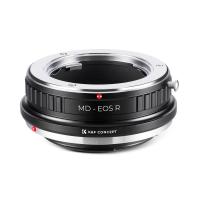What's The Resolution Of A Light Microscope ?
The resolution of a light microscope is limited by the wavelength of visible light, which ranges from 400 to 700 nanometers. The theoretical limit of resolution for a light microscope is approximately half the wavelength of light used, which is around 200 nanometers. However, in practice, the resolution is often limited to around 250-300 nanometers due to various factors such as lens quality, aberrations, and diffraction. This means that the smallest distance between two points that can be distinguished by a light microscope is around 250-300 nanometers. To overcome this limitation, various techniques such as confocal microscopy, super-resolution microscopy, and electron microscopy have been developed.
1、 Optical Resolution
The resolution of a light microscope is known as optical resolution. It refers to the ability of the microscope to distinguish two closely spaced objects as separate entities. The resolution of a light microscope is limited by the wavelength of light used to illuminate the specimen and the numerical aperture of the objective lens. The theoretical limit of optical resolution is approximately half the wavelength of light used, which is around 200-300 nanometers for visible light.
However, recent advancements in microscopy techniques have pushed the limits of optical resolution beyond the theoretical limit. Super-resolution microscopy techniques such as stimulated emission depletion (STED) microscopy, structured illumination microscopy (SIM), and single-molecule localization microscopy (SMLM) have enabled researchers to achieve resolutions of up to 20 nanometers or even better.
These techniques work by manipulating the fluorescence properties of the specimen or by using specialized illumination patterns to overcome the diffraction limit of light. They have revolutionized the field of microscopy and have allowed researchers to visualize biological structures and processes at unprecedented levels of detail.
In conclusion, the resolution of a light microscope is limited by the wavelength of light used and the numerical aperture of the objective lens. However, recent advancements in super-resolution microscopy techniques have pushed the limits of optical resolution beyond the theoretical limit, enabling researchers to visualize biological structures and processes at unprecedented levels of detail.

2、 Numerical Aperture
The resolution of a light microscope is determined by the numerical aperture (NA) of the objective lens. NA is a measure of the lens' ability to gather and focus light, and it is calculated as the refractive index of the medium between the lens and the specimen multiplied by the sine of the half-angle of the cone of light entering the lens. The higher the NA, the better the resolution of the microscope.
In recent years, there have been advancements in microscopy techniques that have pushed the limits of resolution beyond what was previously thought possible with light microscopy. One such technique is super-resolution microscopy, which uses fluorescent molecules to overcome the diffraction limit of light. This technique has allowed researchers to visualize structures at the nanoscale level, such as individual molecules and cellular organelles.
However, it is important to note that super-resolution microscopy is still a relatively new and specialized technique, and it requires specialized equipment and expertise. For most routine applications, the resolution of a light microscope determined by the NA of the objective lens is still sufficient. Additionally, the NA of the lens is not the only factor that affects resolution, as other factors such as the wavelength of light and the quality of the optics also play a role.
In summary, the resolution of a light microscope is determined by the numerical aperture of the objective lens, and recent advancements in microscopy techniques have pushed the limits of resolution beyond what was previously thought possible. However, for most routine applications, the resolution determined by the NA of the lens is still sufficient.

3、 Contrast
The resolution of a light microscope refers to its ability to distinguish two closely spaced objects as separate entities. The resolution of a light microscope is limited by the wavelength of light used to illuminate the specimen. The theoretical limit of resolution for a light microscope is approximately 200 nanometers, which means that two objects closer than 200 nanometers cannot be distinguished as separate entities.
However, the contrast of a light microscope is also an important factor in determining the quality of the image produced. Contrast refers to the difference in intensity between the object and its background. A high contrast image allows for better visualization of the specimen and can improve the resolution of the microscope.
Recent advancements in microscopy techniques have allowed for improved contrast and resolution in light microscopy. One such technique is called super-resolution microscopy, which uses fluorescent molecules to overcome the diffraction limit of light and achieve resolutions of up to 20 nanometers. Another technique is called structured illumination microscopy, which uses patterned light to improve contrast and resolution.
In summary, while the theoretical limit of resolution for a light microscope is approximately 200 nanometers, the contrast of the microscope also plays an important role in determining the quality of the image produced. Recent advancements in microscopy techniques have allowed for improved contrast and resolution in light microscopy.

4、 Depth of Field
The resolution of a light microscope refers to its ability to distinguish two closely spaced objects as separate entities. The resolution of a light microscope is limited by the wavelength of light used to illuminate the specimen and the numerical aperture of the objective lens. The theoretical limit of resolution for a light microscope is approximately 200 nanometers, which means that two objects closer than 200 nanometers cannot be distinguished as separate entities.
However, recent advancements in microscopy techniques have allowed for the resolution of light microscopes to be improved beyond the theoretical limit. One such technique is called super-resolution microscopy, which uses fluorescent molecules to create images with resolutions as low as 20 nanometers. This technique has revolutionized the field of biology by allowing scientists to study cellular structures and processes at a level of detail previously unattainable with traditional light microscopy.
Another important aspect of microscopy is the depth of field, which refers to the range of distances within a specimen that are in focus at the same time. The depth of field is determined by the numerical aperture of the objective lens, the wavelength of light used, and the refractive index of the specimen. A larger numerical aperture and shorter wavelength of light will result in a shallower depth of field.
In conclusion, the resolution of a light microscope is limited by the wavelength of light used and the numerical aperture of the objective lens. However, recent advancements in microscopy techniques have allowed for the resolution of light microscopes to be improved beyond the theoretical limit. The depth of field is another important aspect of microscopy that determines the range of distances within a specimen that are in focus at the same time.































There are no comments for this blog.